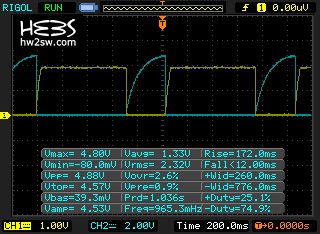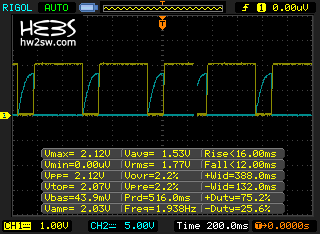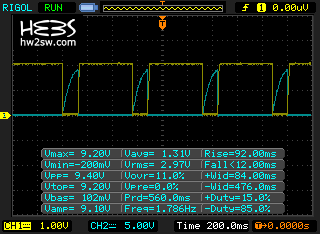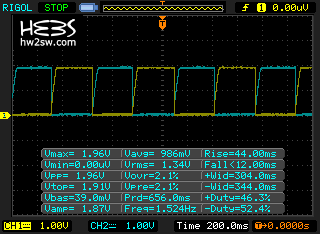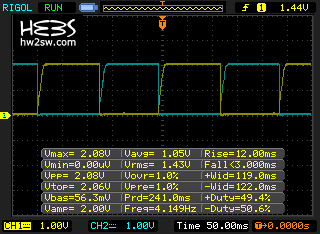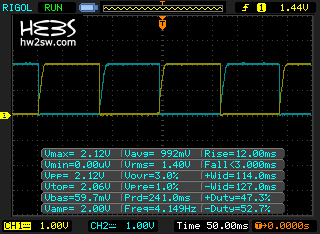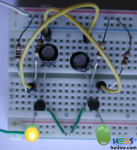
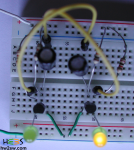
Things change a bit by adding loads to the outputs.
As usually two LEDs are used in order both to furnish a load as required and to give a quick visible feedback on what is going on by changing the sets as with the power supply for example.
The LEDs here used are of a common type (5mm yellow): threshold voltage is unknown because they are spare parts taken here and there but voltages from collectors are enough to put them on.
Photo above shows both the LEDs on but tests and screenshots were taken with a single LED on too.
Ch1, with both the power supplying values:
Frequency rises up (i.e. periods drop down) in both sets and the duty cycle improves on the output with load.
The reason is simple: while cap on right charges as with the same amount of time as usual (so that the LED on left is on for the same time) then the cap on left charges more quickly due to reduced value of resistance given by the parallel between the one of the saturated resistance and the one of LED.
The less the resistance the less the time to (dis)charge for the cap.
There's no need to add screenshots for the specular set because the behaviour is similar except for minor aspects like minimum drop voltages.
Notice that with 5V set the charging curve for the cap is more visible than with 13.5V supply: it's obvious because much currents flows into the circuit per second so reducing the time for operations.
Finally and as we could expect by adding the second LED the total period drops again: the circuit regains a good symmetry but now is faster than before (and it's so with the growing power supply).
Here the screenshots:
Finally a 1-minute-video to show the working circuit.
Please take a look at the changing LEDs frequency with different supply and loads settings:
Thank you!

